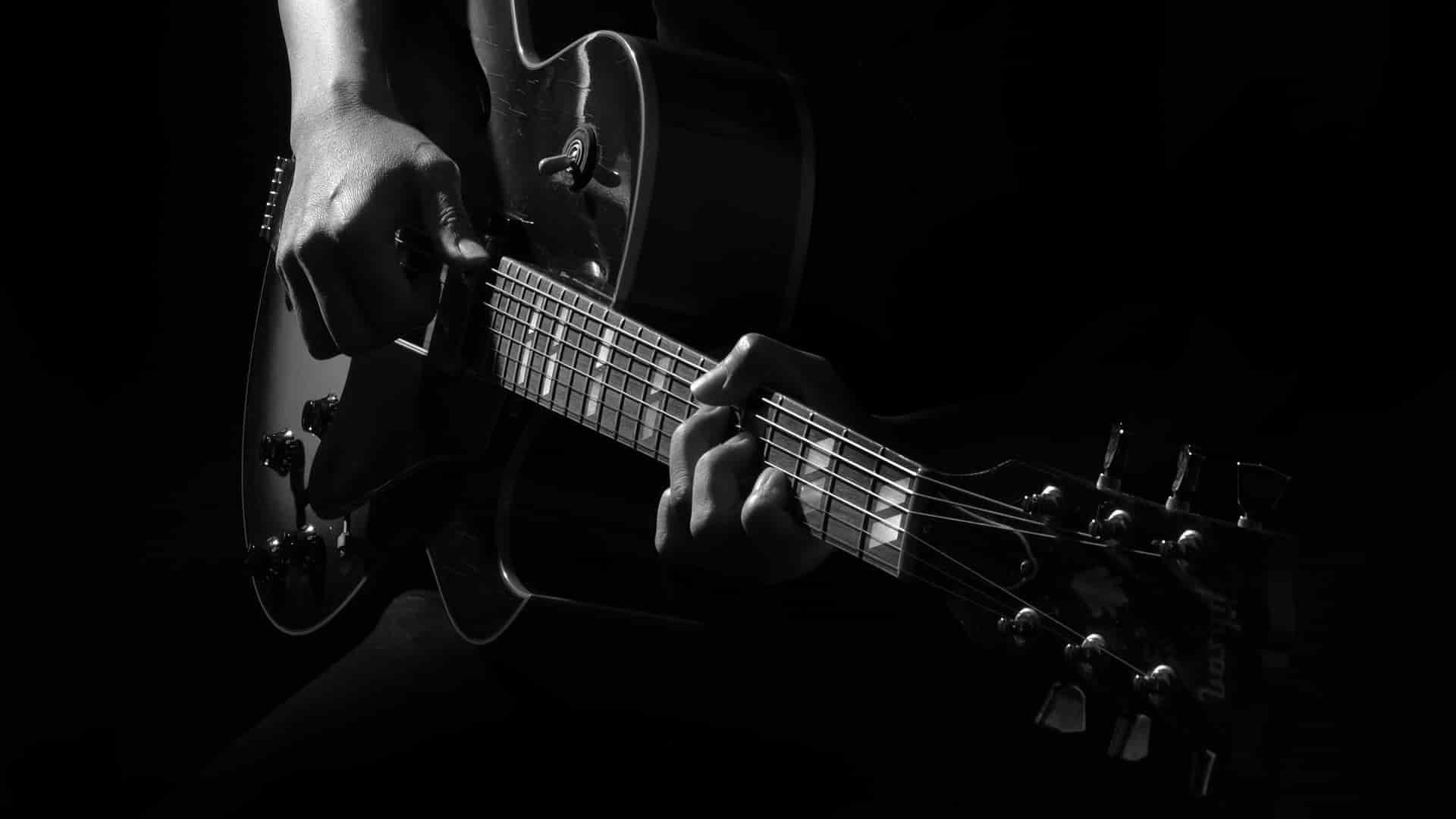GSCC Lesson 11
Revision of Lesson 01-09
If you are new to this series, here’s the links to past lessons:
With the addition of 2 new chords: Bm7b5 and F#m7b5, we had completed the primary chords for Key of C major and G major!!!
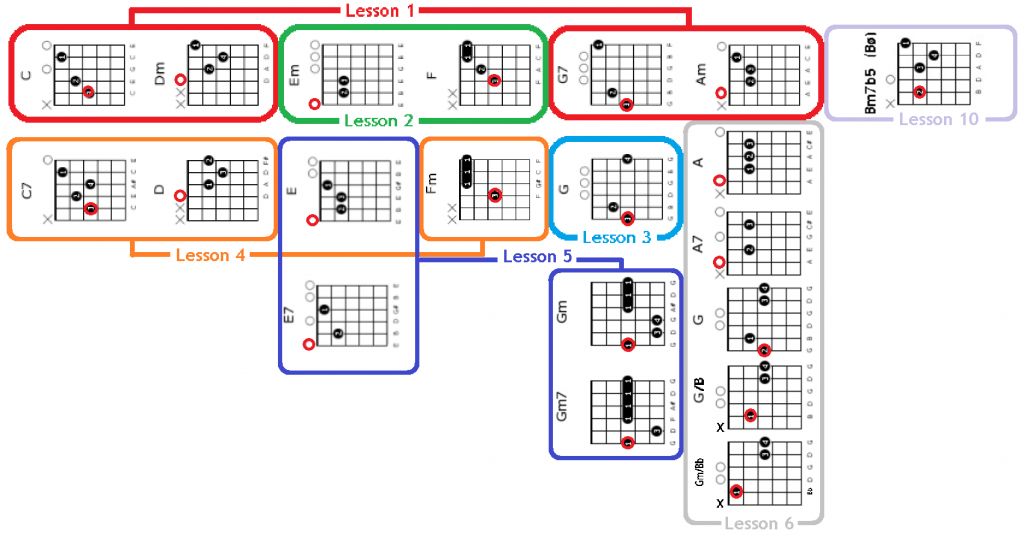
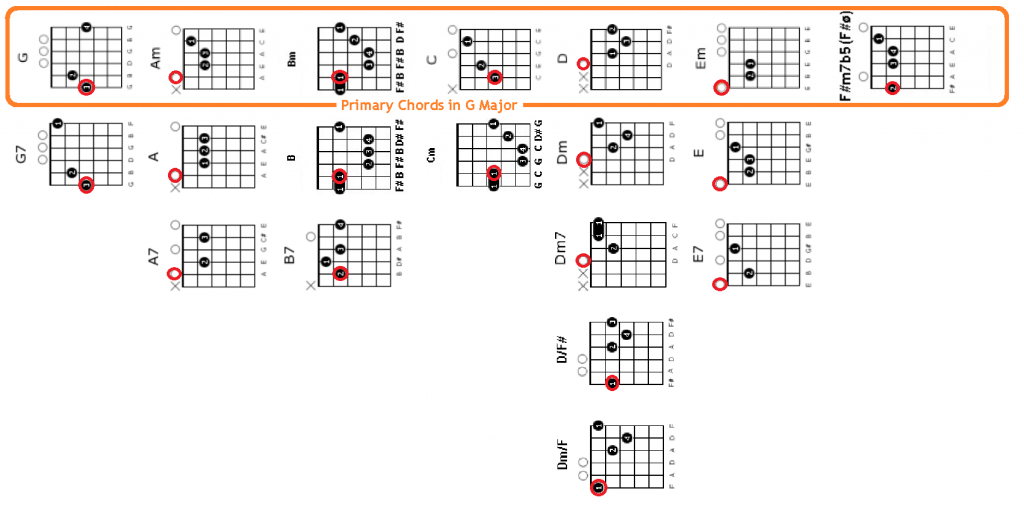
Key of C major and G major are common keys used by guitarist to play sing-along guitar.
We also looked at the guitarist best friend – CAPO , and it’s application.
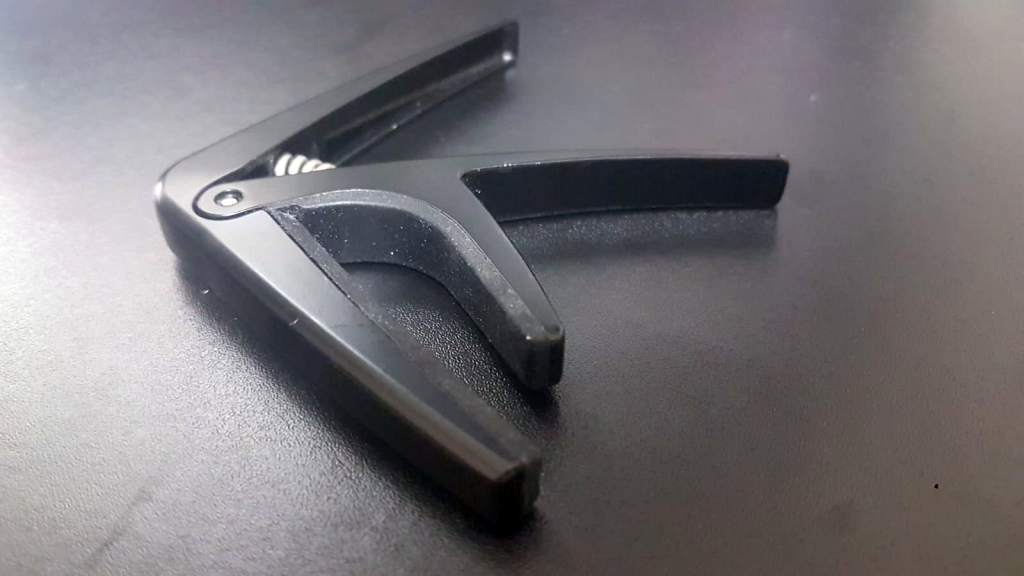
When we use the CAPO in conjunction with chords from C and G keys above , we are able to play almost every pop songs we wanted to play.
We have also looked at some basic strumming patterns:
| 1 | One strum per beat |
| 2 | Up-stroke strumming |
| 3 | Strumming lightly on first few strings |
| 4 | 16 beat strum |
| 5 | Campfire Strum |
| 6 | “Chuck” Strum |
And our 2nd plucking pattern – 8 beat Pluck #2 : Double Strings Pluck
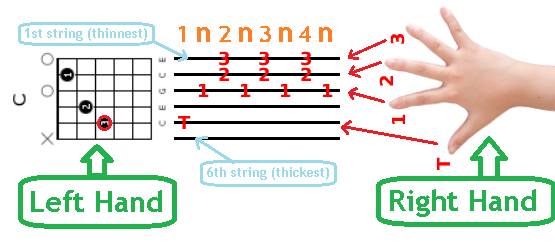
And of course, we had fun learning all these songs !!
Click here to ask a question …
What is 4/4 ?
We often see 4/4 in a chord charts or music notation. It denotes the time signature of a song. It simply means how you suppose to count the beats in a bar in that song.
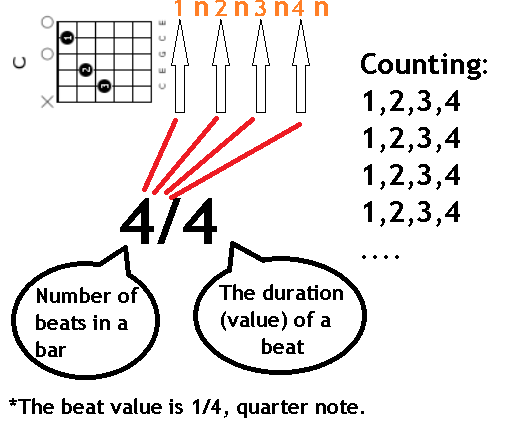
The counting of beats for 4/4 are as follow, as we have been playing it for the past 10 lessons:
So far, all the songs we have learned were played in 4/4. Check them out 😉
Let’s meet our new friend, 3/4
Let’s explore other time signature, or, different counting or rhythmic feel of music. Introducing 3/4!!
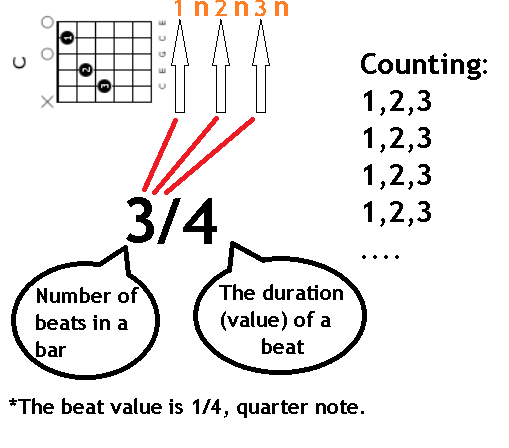
The counting of beats for 3/4 are as follow:
This new time signature create some interesting musical feel. Let’s see how can we play them?
3/4 strumming
So, how do we strum in 3/4?
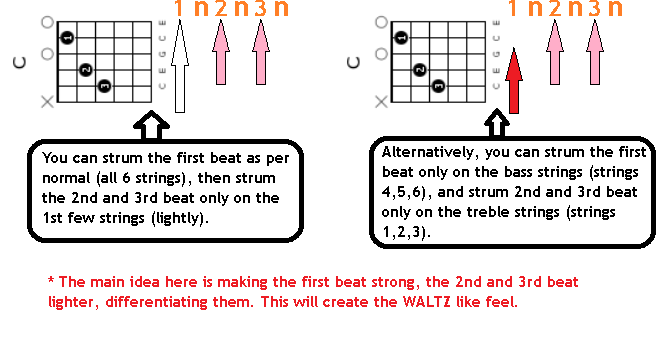
Practice#1: Try to listen to the counting beat (the Tok-Tok cowbell sound) below and try executing the strumming pattern above:
After mastering the pattern, let’s try it with our usual exercise chord progression:

Practice #2: Play them with chord changes exercise video:
Practice #3: Let’s apply this to the new songs we are going to learn today: “Edelweiss” and “Que Sera Sera”. They are both in 3/4 time signature, specially chosen and produced for today’s theme 😉
3/4 plucking
How about 3/4 plucking?
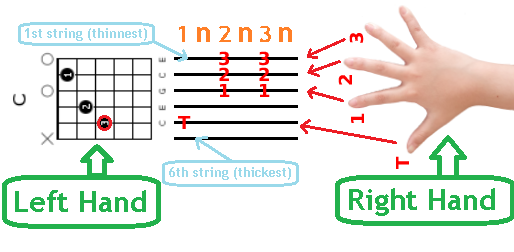
Practice#1: Try to listen to the counting beat (the Tok-Tok cowbell sound) below and try executing the plucking pattern above:
After mastering the pattern, let’s try it with our usual practice chord progression:
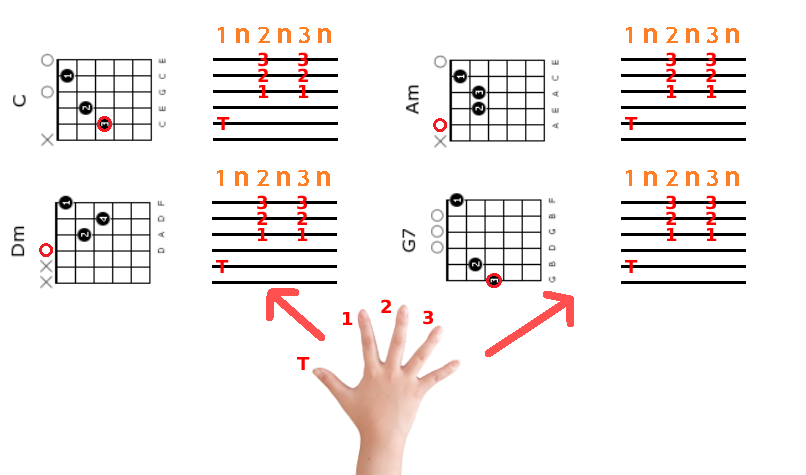
Practice #2: Play them with chord changes exercise video:
Practice #3: Let’s apply this to the new songs we are going to learn today: “Edelweiss” and “Que Sera Sera”. They are both in 3/4 time signature, specially chosen and produced for today’s theme 😉
Let’s make them even more interesting. Fasten your seat belt!!! Here comes, THE “Alternate Bass”
In the past , for plucking pattern, we play the red circled notes as the bass notes for the following family chords.
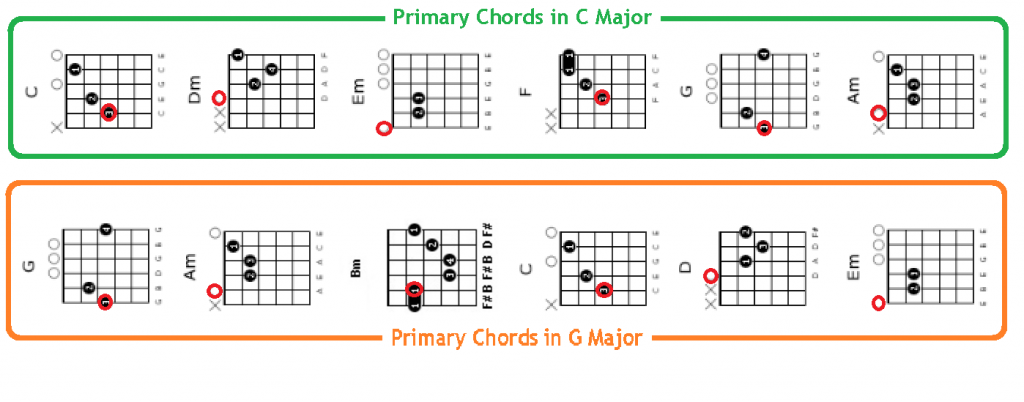
As we had learned , they are the “bass” note of the chord. To be exact, the lowest note in the chord. Here, those bass notes are the ROOT of the chord (“C” note for C major chord, “A” note for A minor chord, “F” note for F major chord).
In fact, we can use any notes in the chords (1,3,5, in the case of C major chord, C ,E , G , as the bass note. It is a bit more on the theory side, we will explore it in future lessons) as the bass note. Using different notes as bass note will create different mood for that particular chord.
Take a look at the “Que Sera Sera” chord charts. You will notice there are little green circle in all the chords.
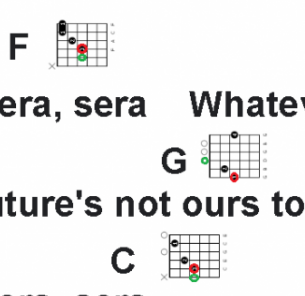
They are the alternate bass (which in this case they are 5th note of the chords).
So , how do we play them?
When we encounter a chord changes, it is best to play the root note (the red circle) as the bass. If the chord never change for the new round of the strumming/plucking pattern, we can play the alternate bass note (the green one) for the 2nd cycle of the pattern. This will make the playing sounds more interesting and less monotonous.
This may sounds a bit mouthful. Let’s examine the song “Que Sera Sera”:

Notice that we are playing the same chord, same pattern and same bass note for 4 times, and more….
How about for every alternate pattern, we use the alternate bass (play the green circle note):

Wow! What happened here? It became livelier !!! The whole thing is more interesting now!!
OK, let’s apply this technique to the entire “Que Sera Sera”!!! You will LOVE it!!
Click here to ask a question …
Song #1 (English: “Edelweiss”)
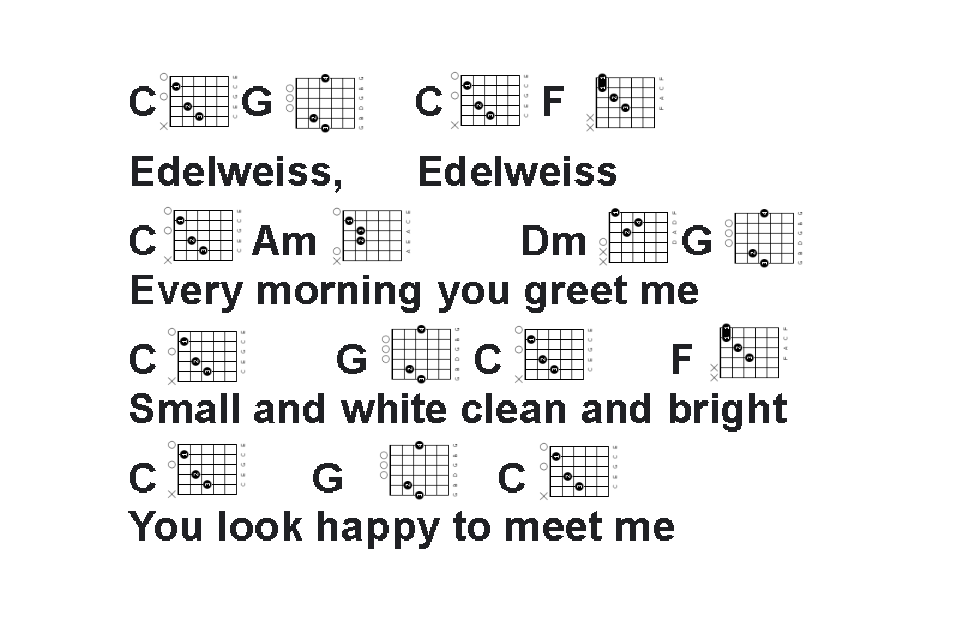
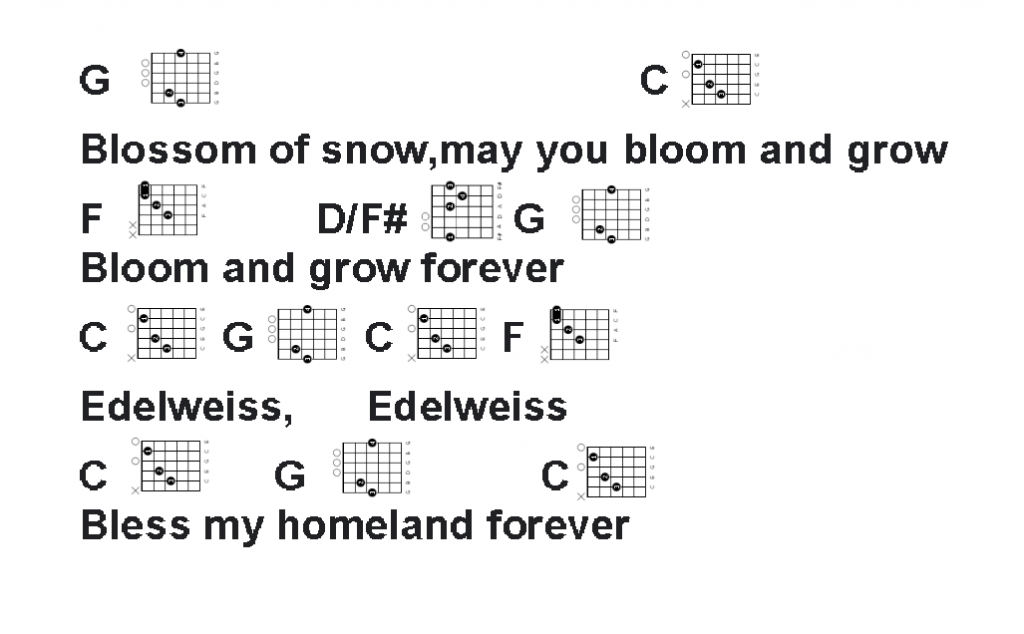
Normal speed
Slower
Slowest
Click here to ask a question …
Song #2 (English Song: “Que Sera Sera” )
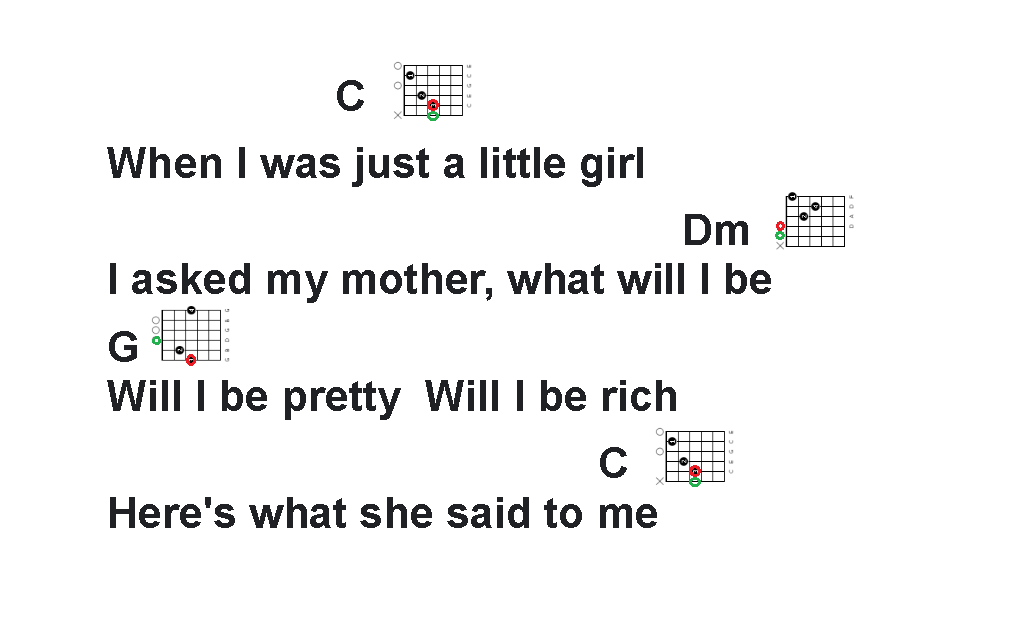
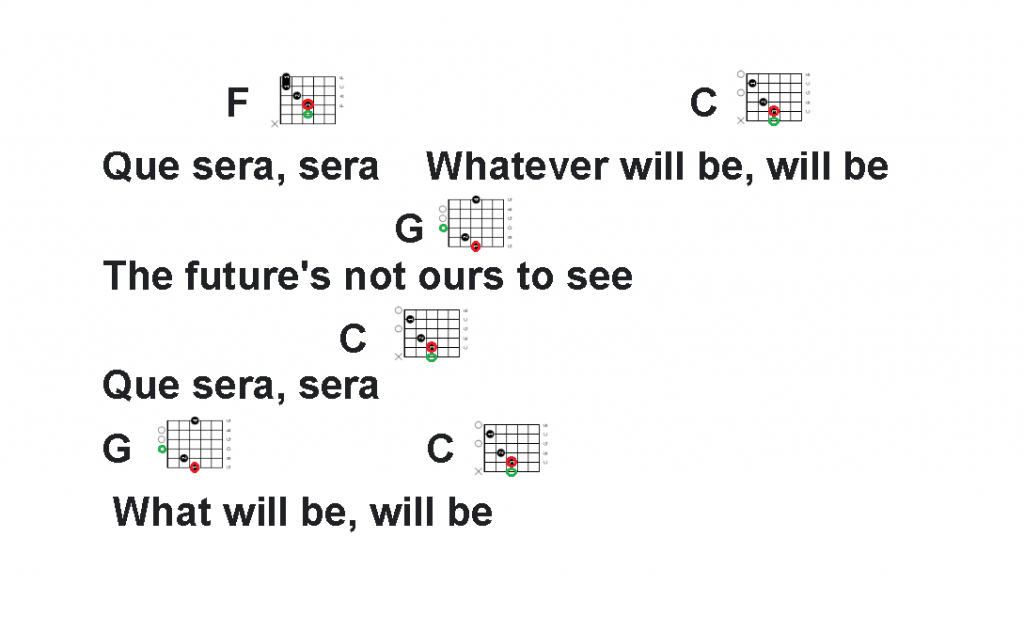
Normal speed
Slower
Slowest
